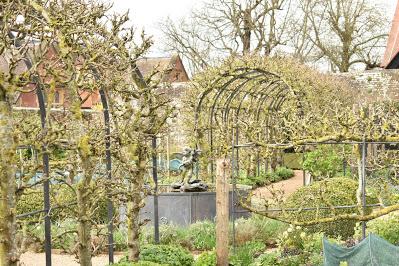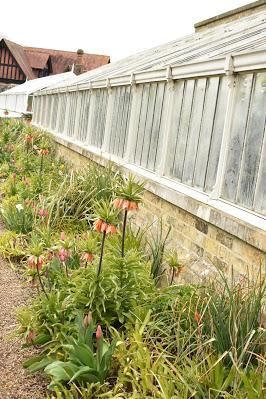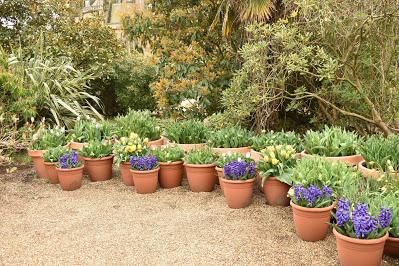Surprising you say, how so? It is a flipping big castle on top a hill overlooking the town? Yes, I know and I have driven past it several times not appreciating just how wonderful the gardens are. It was on the list of gardens to visit as I knew of their tulip festival, but now I know how much I was missing a treat by not visiting sooner.

There is so much I want to say about the Arundel Castle gardens that I almost do not know where to start.
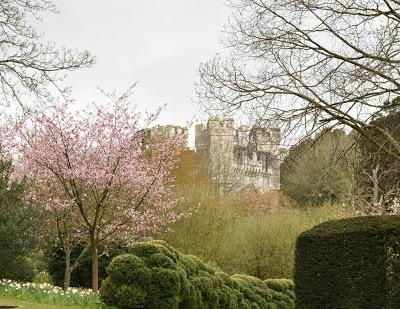
Let's start with some bumpy cloud-pruned hedging, I love a bit of bumpy hedging and always think it is the sign of a good garden. I just loved this view with the froth of cherry blossom and the fuzz of daffodils and tulips in the background. The day had started frosty and sunny; as I headed south the weather turned drizzly then snowy, then grey then sunny again. It is a long drive from home and of course I could not go until the 'stay local' restriction was lifted. It made a glorious first venture out into the world again.

Arundel Castle's origins date from 1067 and it has been occupied ever since. It is the home of the Dukes of Norfolk whose names are peppered throughout our history. Catherine Howard, King Henry VIII's fifth wife (beheaded) was the niece of the 3rd Duke of Norfolk, there are Civil War connections but maybe the 'Drunken Duke', a friend of the Prince Regent, might be my favourite listed in their history. The buildings have been restored and updated over the centuries and its history is an indelible part of the town's landscape.
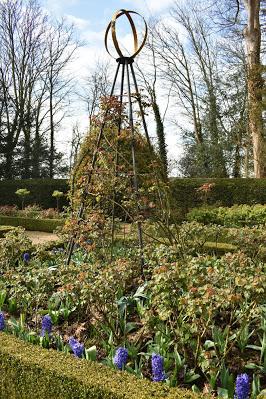
The gardens themselves are relatively new, being largely developed over the last thirty years (when your history starts in 1067 anything in the last two hundred years must feel relatively new....). As ever I am not going to show you all the gardens so that should you get the opportunity to visit that there are still things to discover.
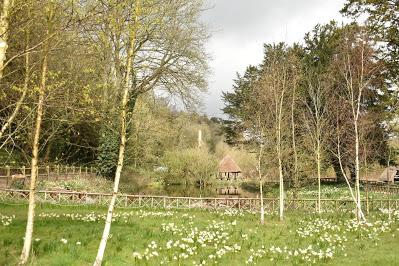
The gardens are an exercise in how many times you can say wow whilst walking through them. The dew ponds are ancient ponds that provided fish for the castle and the (now gone) priory and they have been restored in the last few years. They have been de-silted (un-silted?) and now the two main ponds are crystal clear. There is still some silt remaining as it is important for wildlife and flora but the chalk beds that the ponds are cut into ensure the water is clear. They are called dew ponds because they are not fed by a river/brook but from dew and rainfall.
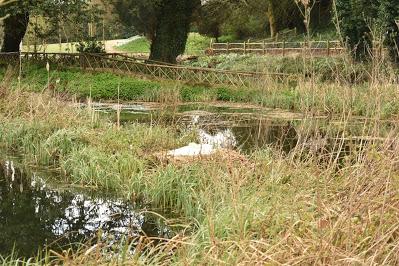
This white splodge is a female swan (Pen) on the nest with eggs. The male swan (cob) was making flamboyant flounces up and down the pond, possibly to distract us from the pen, possibly to show off and possibly to make it clear he could break our arms with his wings should he have the whim to do so. Personally I was happy to keep a respectful distance. Members of the public are currently kept away from walking around the ponds to ensure they get some peace.

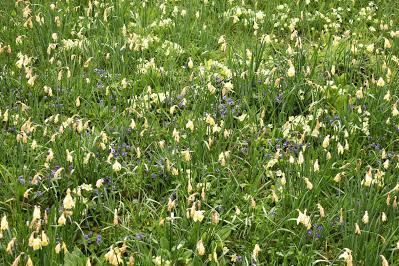
If you peer closely you can see primroses and violets inbetween the daffodils. There is much grandeur at the castle and also much simple beauty. It is a winning combination.

Did I say grandeur? Oh yes! This part of the garden was designed by Isabel and Julian Bannerman. It is the most incredible set of spaces you will possibly ever see.
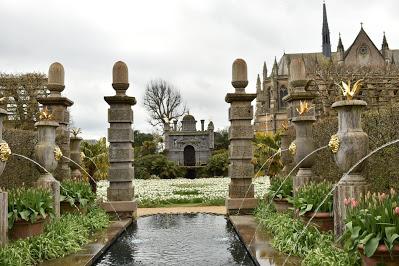
You turn from vista to vista being drawn on and on into exploring more.

I am not sure I have seen a water feature as grand as this since I was visiting gardens in Italy a few years ago!
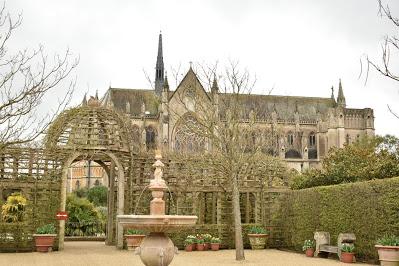
The gardens are balanced between the flamboyant as in the water feature and the calm, such as this gravel courtyard. The wooden arched perolas are a recurring theme in the garden and I want to return to see how it looks when the hornbeam that cover this one are in full foliage. I have seen pictures of what it looks like and would dearly love to see it in reality as it looks so different. The test of a good garden feature is that it looks good every season. The underlying structure alone makes this look marvelous.
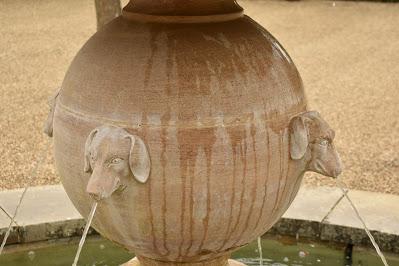
I loved the fountain in the courtyard and the charming dogs that form the spouts. Detail like this will always win a special place in my heart.

You may think that having a castle overlooking the garden was dramatic enough, but these gardens also have the Catholic Arundel Cathedral creating the backdrop. I do need to return as the catheral itself is worthy of exploration, it is a Victorian 'gothic revival' building and was commissioned by the 15th Duke of Norfolk Henry Fitzalan-Howard.

As you walk through the gardens you find juxtapositions that tie the gardens to its backdrop. This too is the sign of a very well designed space.
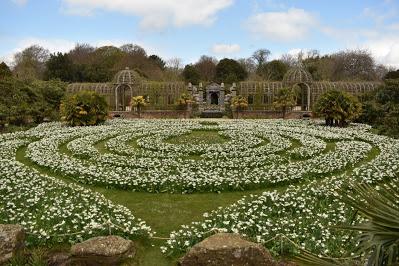
There is this gobsmacking labyrinth, just gobsmacking. Currently it is a joy of white Thalia narcissus but with the tulips just holding their breath waiting for a couple of warm days before bursting into flower.
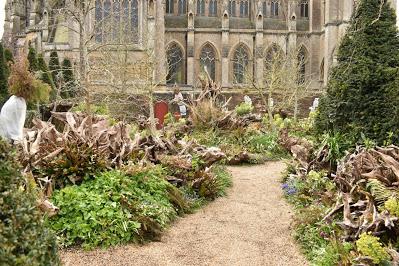
and then there is the Stumpery. Before I went to the gardens I was told that this was a Stumpery above all others. When I entered this part of the garden I knew exactly what they meant.
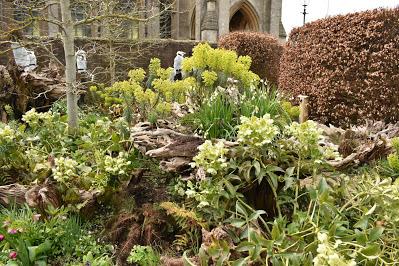
Forget all other stumperies, this one is planted so joyous, so clever and yet also simple; it is a masterclass in what can be done. The stumps are all from the estate and date from the great storm in 1987 that felled so many trees.

This is another part of the garden I would love to see how it changes through the seasons.
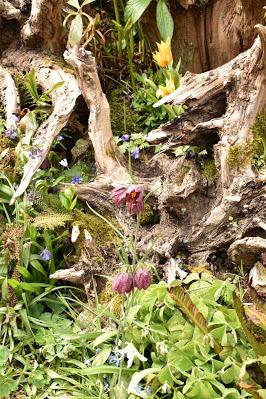
and whilst the gardens as a whole take up a lot of space; many of the areas are showing gardening in smaller portions and so are relatable. You don't need a huge area to make a stumpery, you need 'a' stump.
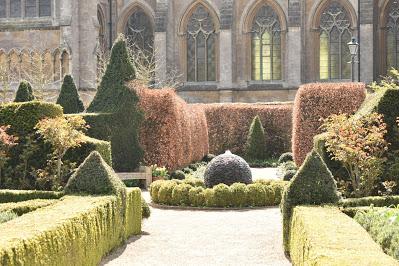
The garden draws you through it, through its different styles that make the most of their surroundings.
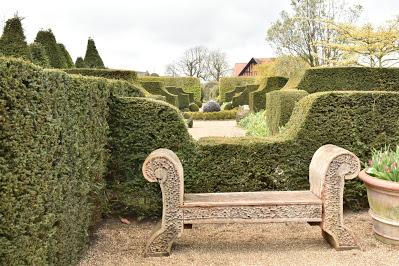
Every angle is considered as you walk through from one area to the next.
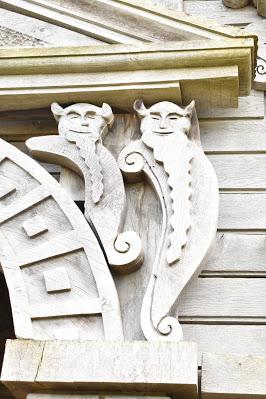
and there are charming details to make you smile.
